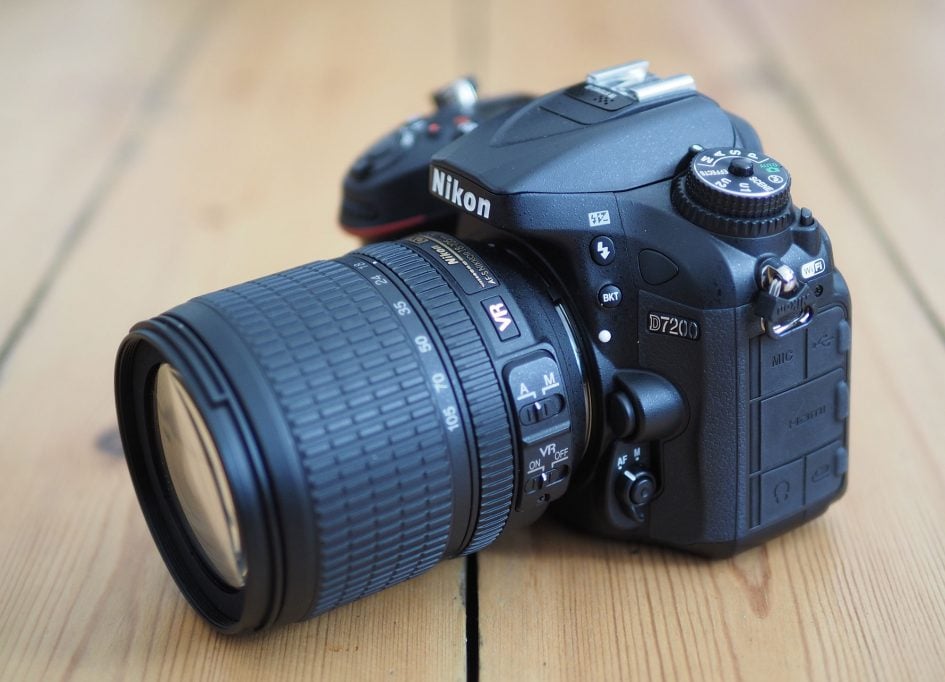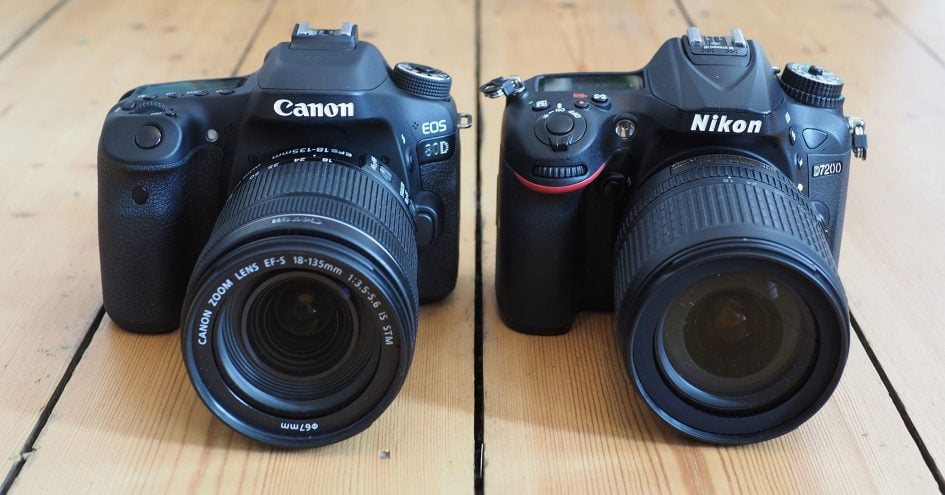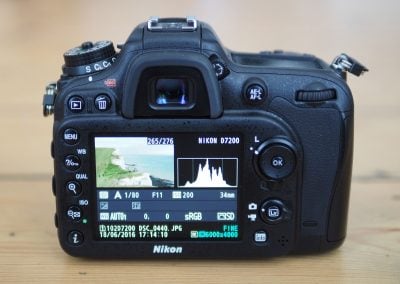Nikon D7200 review
-
-
Written by Gordon Laing
Verdict
When the original D7000 was launched roughly four and a half years ago, Nikon significantly raised the bar of what we could expect from a camera of its class. Features like 100% viewfinder coverage, 6fps shooting, 2016 pixel metering and twin memory card slots were a big deal in 2010, but it’s revealing these core specs have remained essentially unchanged over the subsequent two generations. So the latest D7200 sports the same viewfinder size, the same burst shooting speed (albeit shifting higher resolution images), the same metering resolution and much the same body, ports and controls.
The big upgrades on the previous D7100 involved increasing the sensor resolution from 16 to 24 Megapixels (dropping the low pass filter while it was at it) and boosting the AF system from 39 to 51 points. The latest D7200 sticks with these figures, but enhances the AF system with operation in lower light (down to -3EV), and it also looks like the actual sensor may be a different type (using the D5x00 and D3x00 part rather than the D7100’s).
The shooting speed remains the same as before – 6fps at the full resolution or 7fps at the cropped 1.3x mode – but it’s now much more useful than before with a buffer of 100 JPEGs or 18 14-bit RAW files compared to 33 JPEGs or six 14-bit RAWs on the D7100. This certainly addresses one of my greatest concerns with the older model. The presence of Wifi and NFC is welcome, and suggests Nikon may now at last be incorporating it in all DSLRs going forward. Beyond this, the updates are pretty minor: deeper nine-frame AE bracketing, a timelapse mode with exposure smoothing, a flat picture profile for subsequent grading, and what sounds like the promising addition of 50p and 60p for movies until you discover it only applies when filming in the 1.3x crop mode.

Considering the D7200 inherits a number of features from the D750, I was disappointed to find two aspects absent. First is the tilting screen of the D750. I know some people aren’t bothered about articulated screens, but once you start exploiting them for shooting movies or stills in Live View at high or low angles, it’s hard to go back. Maybe it was left out of the D7200 specification over concerns of toughness, but I can tell you the mounting on the D750’s screen felt very robust to me. This is the biggest physical difference with its main rival, Canon’s EOS 80D.
The second aspect is less obvious: the use of a much simpler 2016 pixel RGB metering sensor as oppose to the 91k pixel sensor of the D750. Now it may be that the latter is a full-frame part that couldn’t easily be deployed in a DX body, but it certainly means the D7200 lacks the sophisticated metering of the D750.
So while the D7200 offers some useful and welcome upgrades over its predecessors, it still represents a mild update with nothing that really makes it stand out. The improved AF and deeper buffer suggest it’s aimed at sports and action shooters, but the 6fps speed at the full resolution isn’t particularly remarkable anymore, especially at the price.
Nikon D7200 vs Canon EOS 80D
The biggest rival for the D7200 is Canon’s more recent EOS 80D. Both are weather-sealed upper mid-range DSLRs with 24 Megapixel APS-C sensors, large viewfinders with 100% coverage, broad and dense AF arrays, decent continuous shooting capabilities, 1080 / 60p video, mic and headphone jacks, and built-in Wifi.

Many of the EOS 80D’s upgrades feel a lot like Canon specifically addressing shortfalls of the earlier EOS 70D against the Nikon D7100 and D7200. The expanded viewfinder coverage, broader and denser AF array, the addition of a headphone jack and a built-in interval timer – all features present on the D7200, not to mention its predecessor the D7100.
Canon’s upgrades bring the two bodies much closer than before, with fewer benefits remaining for the Nikon D7200. The crisper output from a sensor bereft of a low pass filter, the convenience of twin memory card slots, and the arguably superior tracking of the 3D autofocus system are the pros of the D7200 over the 80D. On the other side, the 80D boasts a fully-articulated touch-screen, far superior autofocus for movies and during Live View, and access to a kit zoom with a motorised zoom accessory.
You’re probably coming to the same conclusion as me at this point: both are great cameras that perform well for stills and movies, but the Canon is superior for video and the Nikon has the edge for photos, while also coming in slightly cheaper due to age. See my Canon EOS 80D review for full details.
Nikon D7200 final verdict
I hope to update this page with my final verdict on the Nikon D7200 in the future, but wanted to share my full results and sample images with you sooner rather than later. What I can say right now is while the EOS 80D has caught-up on many of the features and boasts not just a fully-articulated touch-screen and far superior movie AF, there’s simply no denying the images from the D7200 are crisper overall. It’s partly a superior kit zoom (at least the 18-105mm I used in my tests), partly a sensor with no low-pass filter, and partly Nikon’s image processing, but the bottom line is the still photos look better than the 80D kit, whether comparing out-of-camera JPEGs or processed RAW files. This, combined with the dual memory card slots and superior AF tracking algorithm (through the viewfinder) will still make it a very tempting camera for stills shooters. If you desire something tougher, faster and more confident overall, try to reach for the D500, but at its price point the D7200 is still a highly satisfying camera to shoot with.




